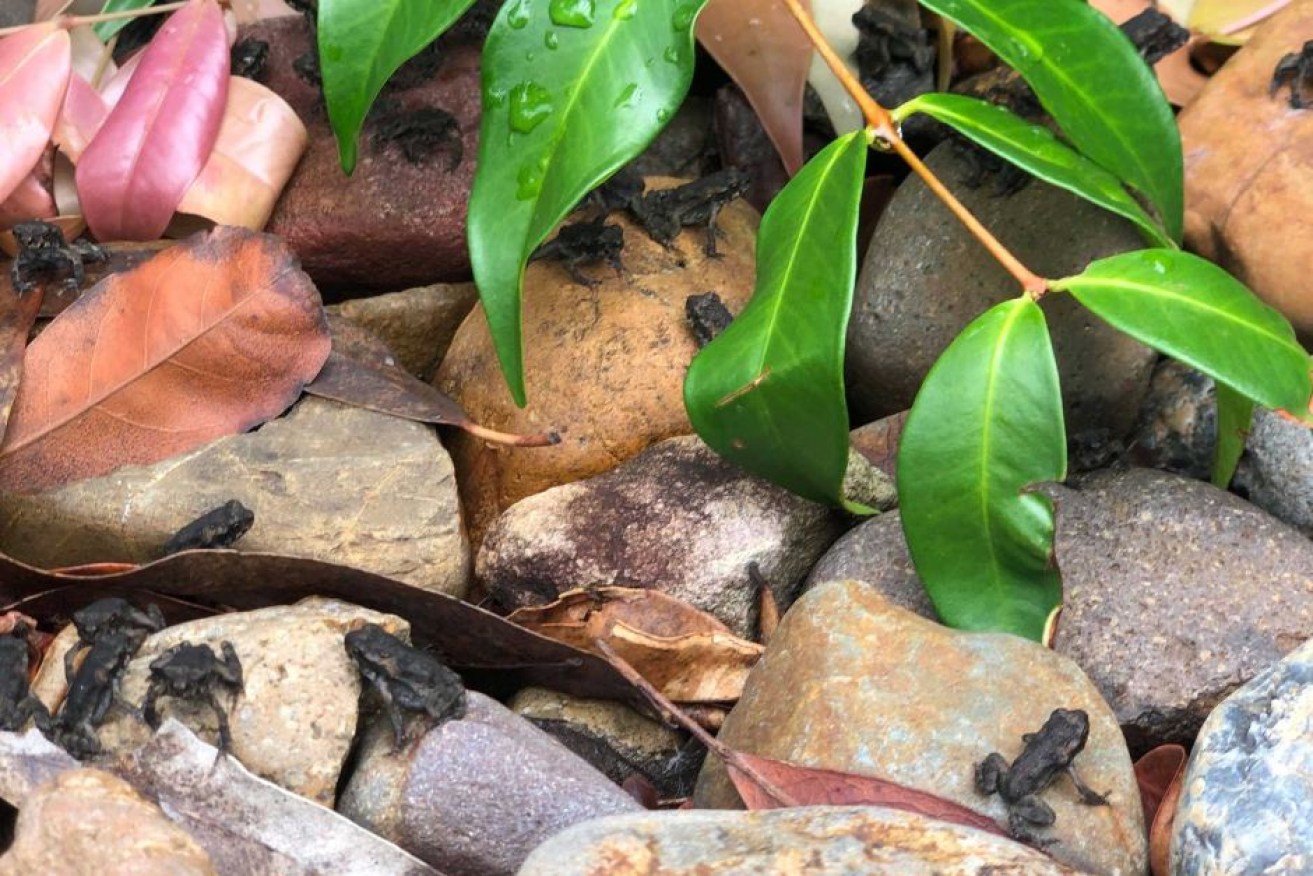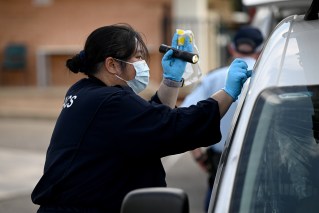Toads take over UQ campus after wet week
A Queensland university has seen an explosion in cane toad numbers, with possibly hundreds of thousands of tadpoles taking up residence in its lakes.

Thousands of the cane toads have been spotted at the St Lucia campus. (Supplied)
The University of Queensland (UQ) St Lucia campus, home to a leading eradication program, has become a breeding ground for cane toads after a week of severe storms and heavy rainfall.
Professor Rob Capon, who discovered a way to turn cane toads’ own toxin against them, told ABC Radio Brisbane the invasion of the campus was due to favourable weather conditions.
“The weather that we’ve had recently is absolutely ideal,” he said.
“Cane toads are just looking for the first opportunity to breed — a bit of rain, and a bit of hot weather and off they go.
“They’re hiding in the bushes waiting to breed the moment the conditions are right.”
Capon said the breeding season had “come all at once”.
“When you have even rain over a period of time the different females and the adult males can get together over time, so it’s sort of spread out,” he said.
“Whereas this has sort of just happened after a dry spell — and then, bam.
“All these toads have just been sitting there biologically ready to go, and now the conditions are just right for it.”
Untold numbers
Capon said it was difficult to estimate just how many tadpoles had been born in recent weeks because each female can lay up to 30,000 eggs.
“It’s hard to count them all, but suffice to say it’s in the many, many thousands, and they can breed multiple times a year,” Capon said.
“Not all of those tadpoles will make it into toads, but if we can drop down the number of tadpoles then hopefully that will make it even fewer that get through to be adult toads.”
But he said the tadpoles could grow into adults within a couple of weeks.
Capon said the number of cane toads was likely to spike not just in Brisbane, but up into far north Queensland and even into northern New South Wales.
But he said the average homeowner need not be too concerned — unless they have a larger body of water near their residence.
Proliferation under control
Capon said the explosion at UQ was well under control, with his trapping technology in full force.
“We’ve developed a bait which is based on the chemical cue that the eggs release into the water, and this is an attractant that brings in the tadpoles,” he said.
“What we do is put a version of that into a funnel trap, which is a box trap with holes in the side and a funnel shoved in.
“The scent that is released from our bait goes out into the surrounding waters and tadpoles sense it and think that there’s a huge pile of eggs at the other end of it.
“So that approach is now being rolled out across Northern New South Wales and Queensland by over 100 organisations, and of course, at UQ.”
Capon said the traps were one of the most humane ways of controlling the toad population.
“The natural pheromone is species-specific, which means only cane toads are attracted to the traps,” he said.
“It doesn’t kill anything — it allows for filtering, so if [something else] should swim in there randomly, you could let them go.”
Some estimates put the current number of cane toads in Australia, which were introduced into the country in 1935 to eat cane beetles, at more than 1.5 billion.
– ABC













